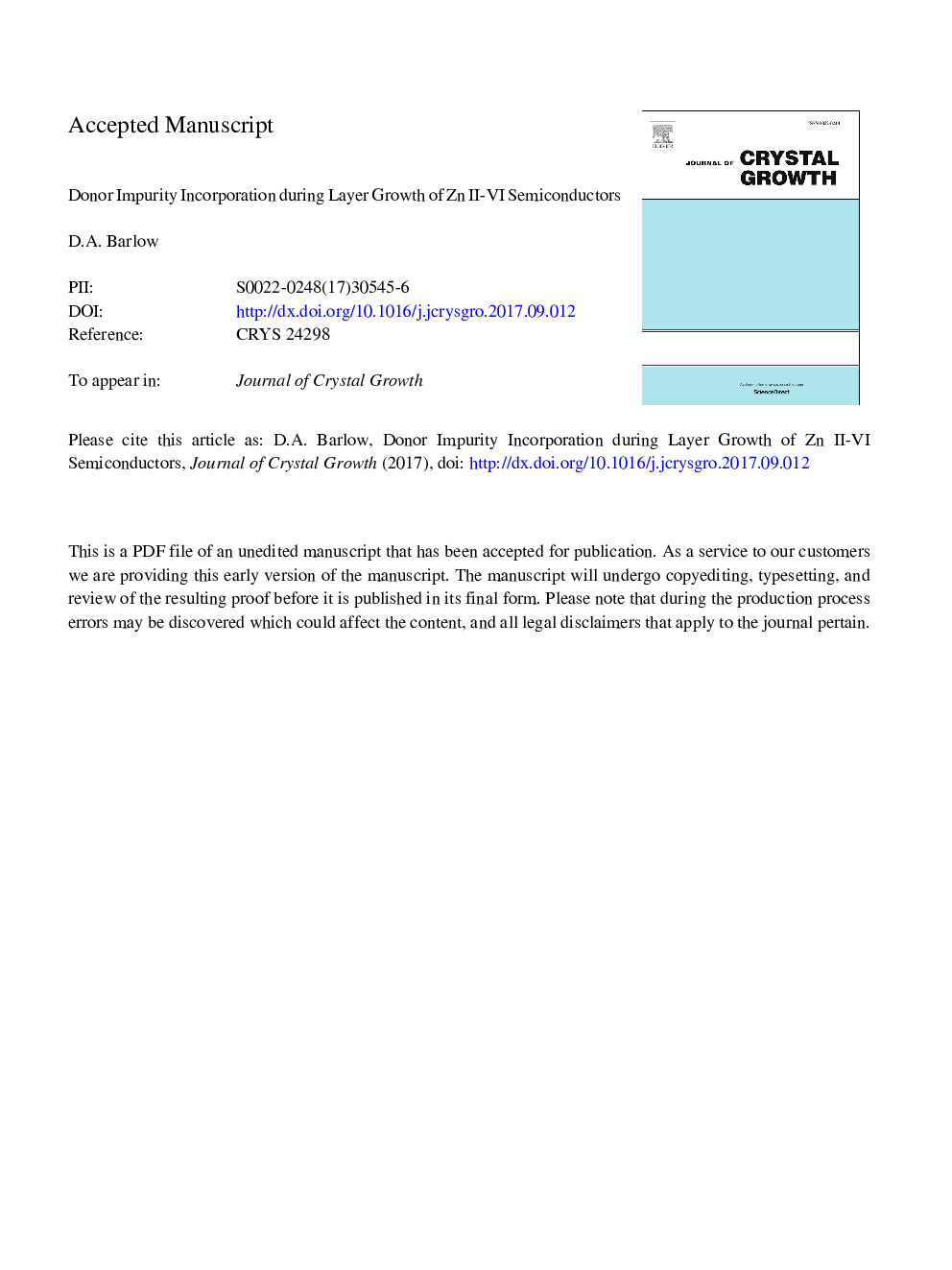| Article ID | Journal | Published Year | Pages | File Type |
|---|---|---|---|---|
| 5489104 | Journal of Crystal Growth | 2017 | 18 Pages |
Abstract
The maximum halogen donor concentration in Zn II-VI semiconductors during layer growth is studied using a standard model from statistical mechanics. Here the driving force for incorporation is an increase in entropy upon mixing of the donor impurity into the available anion lattice sites in the host binary. A formation energy opposes this increase and thus equilibrium is attained at some maximum concentration. Considering the halogen donor impurities within the Zn II-VI binary semiconductors ZnO, ZnS, ZnSe and ZnTe, a heat of reaction obtained from reported diatomic bond strengths is shown to be directly proportional to the log of maximum donor concentration. The formation energy can then be estimated and an expression for maximum donor concentration derived. Values for the maximum donor concentration with each of the halogen impurities, within the Zn II-VI compounds, are computed. This model predicts that the halogens will serve as electron donors in these compounds in order of increasing effectiveness as: F, Br, I, Cl. Finally, this result is taken to be equivalent to an alternative model where donor concentration depends upon impurity diffusion and the conduction band energy shift due to a depletion region at the growing crystal's surface. From this, we are able to estimate the diffusion activation energy for each of the impurities mentioned above. Comparisons are made with reported values and relevant conclusions presented.
Related Topics
Physical Sciences and Engineering
Physics and Astronomy
Condensed Matter Physics
Authors
D.A. Barlow,
